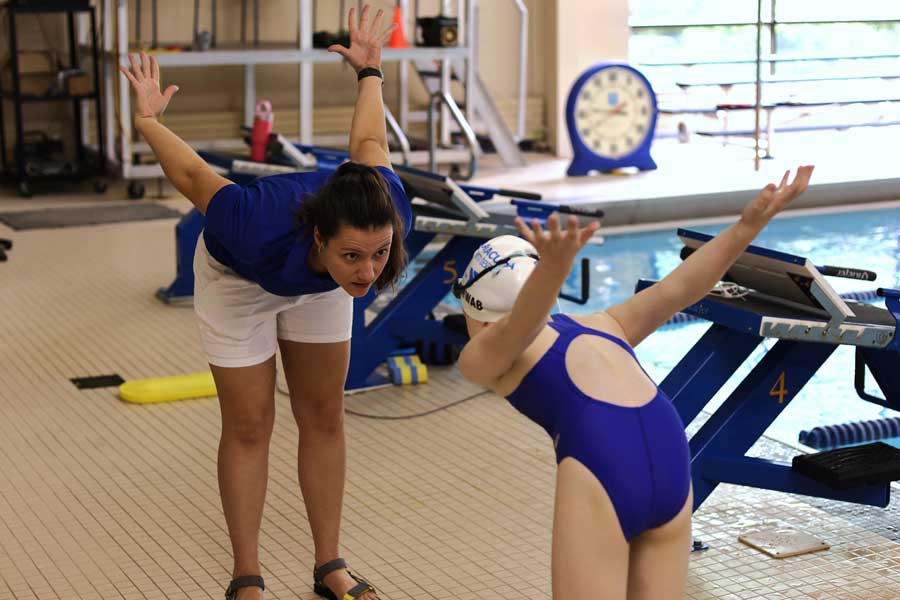How to play a sport in college
Advice for students (and their parents) who want to continue their sport in college

If you are a high school athlete who wants to compete at the college level, the first step in getting there is showing interest, says Chelsea Schwab, head men’s and women’s swimming coach at the University of Pittsburgh at Bradford.
Schwab, who has been coaching the Pitt-Bradford Panthers since 2019, explained the process of becoming a college student-athlete.
“There seems to be a common thought that if coaches aren’t cold calling you, you are not talented enough to continue at the college level,” she said.
Schwab explained that coaches at all levels have limits on the number of places they can visit and the time they have to watch athletes perform, so she suggests emailing a coach early in their high school careers.
First, she said, this gets an athlete on a coach’s radar. Depending on an athlete’s sport, the coach can keep an eye out for them at a game, meet, match or tournament they’re attending.
Second, the coach can answer questions not only about a school or program, but also about how to shape a high school athletic career to improve their odds of making a team – such as what specialties to pursue or what skills are always in demand.
“Coaches also know what statistics they’re looking for and can let high school athletes know what it will take to compete for a spot on their roster.
“If you are interested at all, contact a coach,” she said. “Don’t wait around.”
Most college coaches have an email listed on their school’s athletic website, she said. There are different timelines for when coaches may interact with or respond to a potential student-athlete but getting that initial contact is a good starting point.
So, what to say in that first email?
- Name
- Where you are from
- Grade level
- Subjects interested in studying
- Relevant statistics
- What you want from the interaction – advice, a visit, etc.
While sports fans are probably most familiar with the NCAA’s Division I, there are two other divisions, each with their own set of rules.
The National Collegiate Athletic Association is the primary organization for regulating college sports.
NCAA Division I schools are typically the largest programs with the most athletic scholarships, highest competition levels, and more significant media coverage.
Division II programs offer a balance of competitive athletics, academic focus, and fewer athletic scholarships, often attracting student-athletes who want a strong sports experience without the full intensity of Division I.
Division III schools do not offer athletic scholarships, prioritizing academics and the overall college experience while still providing competitive athletics.
While DI schools tend to be the largest and DIII the smallest, there are exceptions and different experiences at each level, Schwab said.
“I would encourage athletes to not attach themselves to the division label,” Schwab said. “Going DI does not mean a full-ride scholarship or a better experience. Going DII or DIII does not mean that they’re not competitive.”
She encouraged athletes to look at a variety of schools. High school and club coaches can help athletes find colleges that might be good matches.
“Just like it is in academics, there are going to be schools that are an absolute reach for your performance level, ones where you can fit right in the middle talent-wise, and ones where you may be a starter or team leader right from the beginning.”
The important thing is for student-athletes to find a place where they feel at home and can reach their goals – athletically and scholastically.
--30--